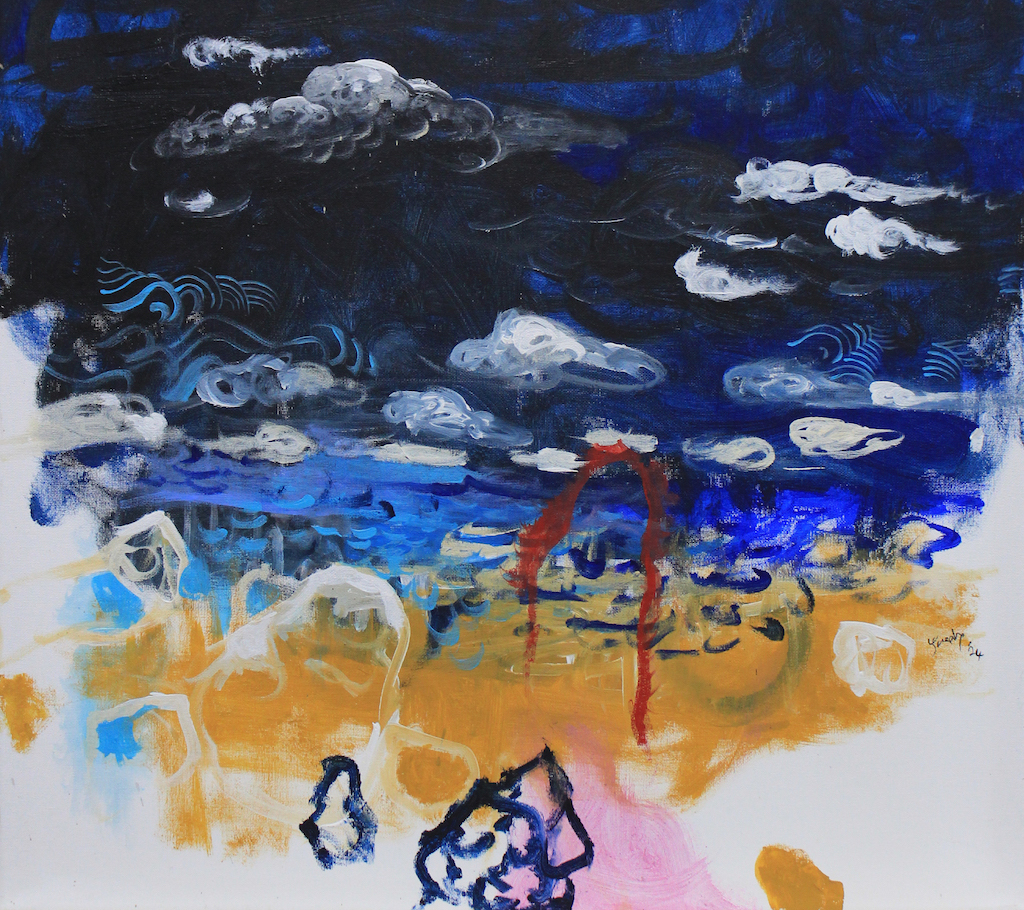Photo courtesy Saskia Fernando Gallery
In his new exhibition Discovery of Histories at the Saskia Fernando Gallery, contemporary artist Jagath Weerasinghe engages in a thought provoking dialogue about the significance of creating art that resonates with current issues rather than being anchored in the past or future. This exhibition marks a pivotal moment in Weerasinghe’s career, showcasing his evolution as an artist and his critical response to the complex socio-political landscape of Sri Lanka, which he believes is filled with pressing challenges that require immediate attention.
Weerasinghe acknowledges that while his current body of work may not directly address specific issues, it embodies an intuitive response to present day realities. He emphasises the importance of a creative approach that captures the essence of life as it unfolds today rather than relying solely on meticulous planning and research typical of conceptual art. This instinctive methodology allows for a raw and emotional expression that resonates deeply with the viewer.
The artist draws attention to the global crises that have emerged, especially during the COVID-19 pandemic, highlighting how such issues transcend borders. “COVID all of a sudden showed us… it is global, he says, pointing out the interconnectedness of social injustices worldwide, including racism and nationalism.” Weerasinghe reflects on how these global problems can be mirrored in local contexts, asserting that there was no place without a problem.
Delving into Sri Lanka’s political climate, Weerasinghe critiques the rise of ethno-nationalism, arguing that many politicians leverage nationalism for power. He notes that the previous government embodied a more profound nationalist sentiment, which has led to exclusionary policies. This has contributed to a fragmented societal landscape where citizens feel disillusioned and marginalised.
In his current exhibition, Weerasinghe showcases this critique through a series of artworks created between 2020 and 2024 that reflect the social and political upheavals caused by the COVID-19 pandemic, political unrest in Sri Lanka and growing global instability. Through his Under the Dark Sky series, which poignantly captures the uncertain atmosphere following the pandemic, he conveys a pervasive sense of anxiety while also suggesting a glimmer of hope for collective action against the status quo.
A significant theme in Weerasinghe’s work is the exploration of relationships and identities that exist outside traditional constructs. He says that whenever there are global problems, those relationships get marginalised, highlighting the experiences of communities such as LGBTQ+ individuals. By representing marginalised communities, Weerasinghe seeks to bring attention to their struggles that are frequently silenced in times of crisis.
Weerasinghe critiques the commodification of art in the global market, expressing concern over how contemporary art often becomes gentrified and detached from genuine human experiences. He argues that artwork itself doesn’t say anything, calling for a return to authenticity in artistic expression. He urges fellow artists to be more direct without hiding their stories under layers of abstraction.
Despite the bleakness of the current political environment, Weerasinghe remains optimistic about the potential for collective action. He advocates for participatory democracy, stressing the need for citizens to engage actively in the political process. “We have to pressurise the government to have a large and deep understanding of what participative democracy is,” he says, believing that communities can push for meaningful change through unity.
In Discovery of Histories, Weerasinghe revisits the recurring motif of the ruined stupa, which symbolises his personal disillusionment with how Buddhism’s peaceful teachings have been co-opted to justify violence. In his series, Explorers Have Eyes and Guns, he reimagines the stupa as a symbol of enduring resilience, urging a re-examination of history and a collective effort to reclaim narratives for a more inclusive future.
The artist’s work serves as a beacon of hope, encouraging individuals to confront the challenges they face and to seek solidarity with one another. “This is the only place where you can think of having any hope,” he says, reinforcing the idea that change is possible when collective voices unite.
Weerasinghe’s reflections underscore the importance of art as a medium for addressing contemporary issues in Sri Lanka and beyond. By prioritising authenticity and emotional resonance, he challenges both fellow artists and society to engage with the pressing challenges of our time. His work serves not only as a reflection of personal experiences but also as a catalyst for broader conversations about identity, politics and the future of Sri Lanka in a global context. As Weerasinghe suggests, it is crucial for art to remain grounded in the present, capturing the complexities of human existence while inspiring hope for a better tomorrow.
The exhibition showcases a significant evolution in Weerasinghe’s artistic practice and a critical examination of the systemic issues shaping contemporary global conflicts.
